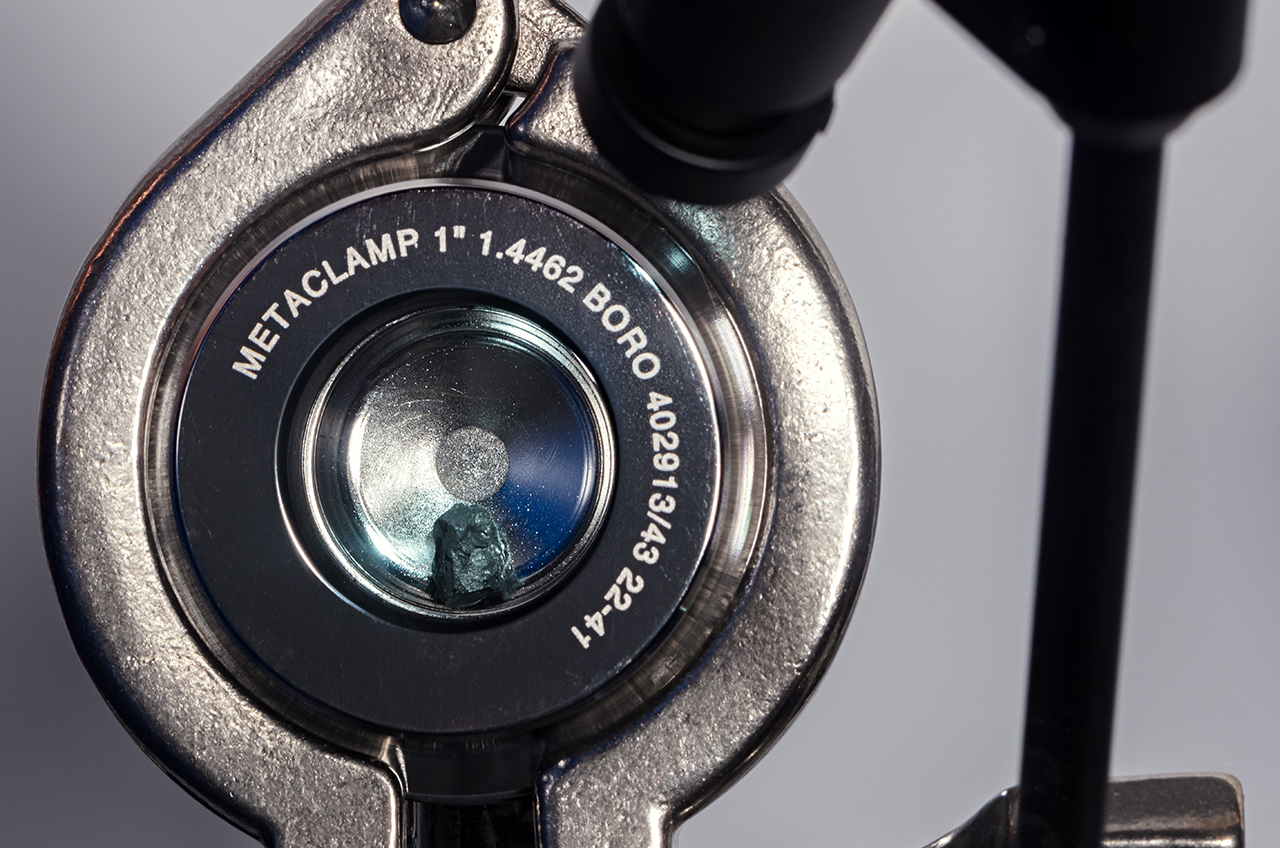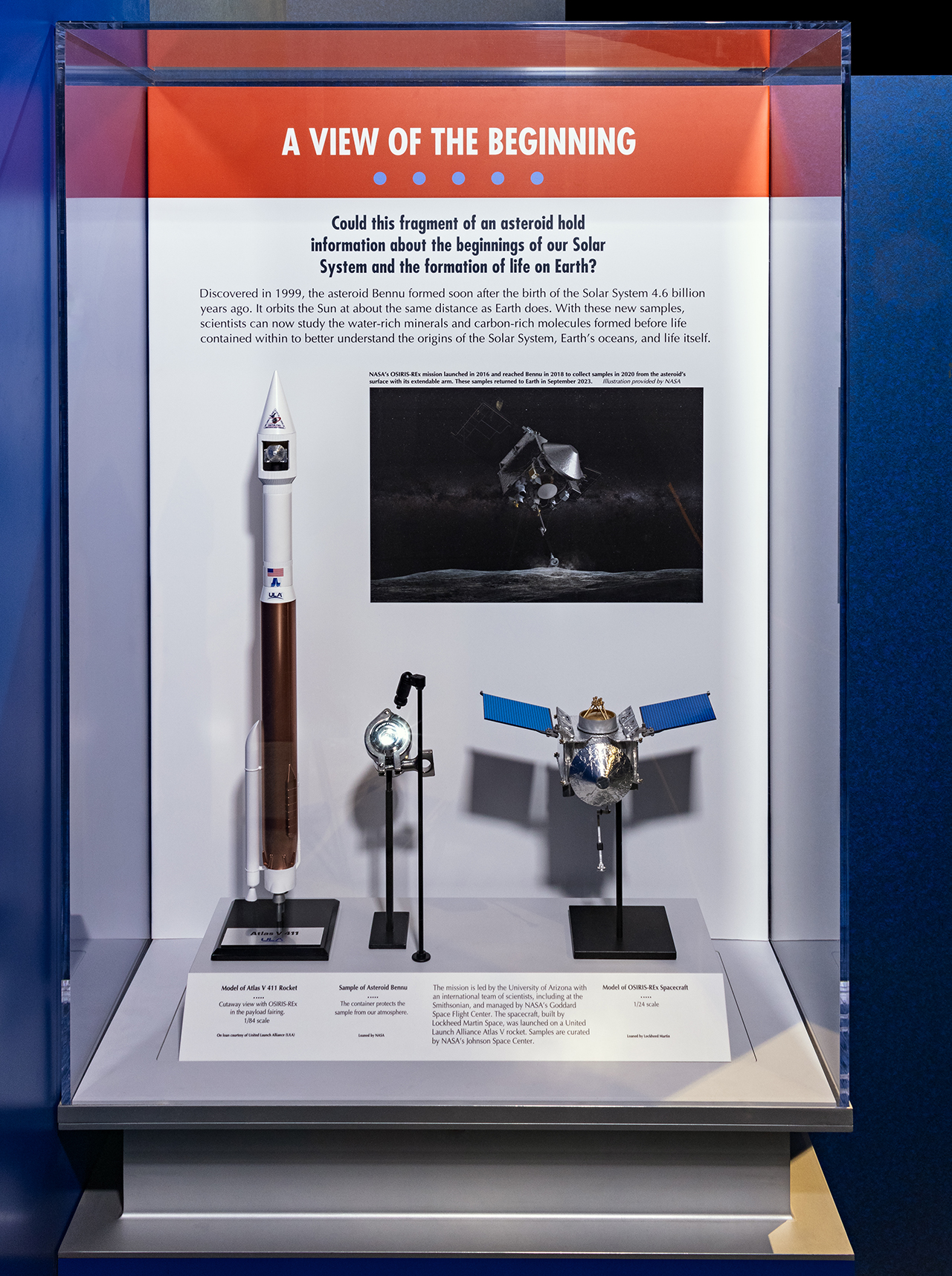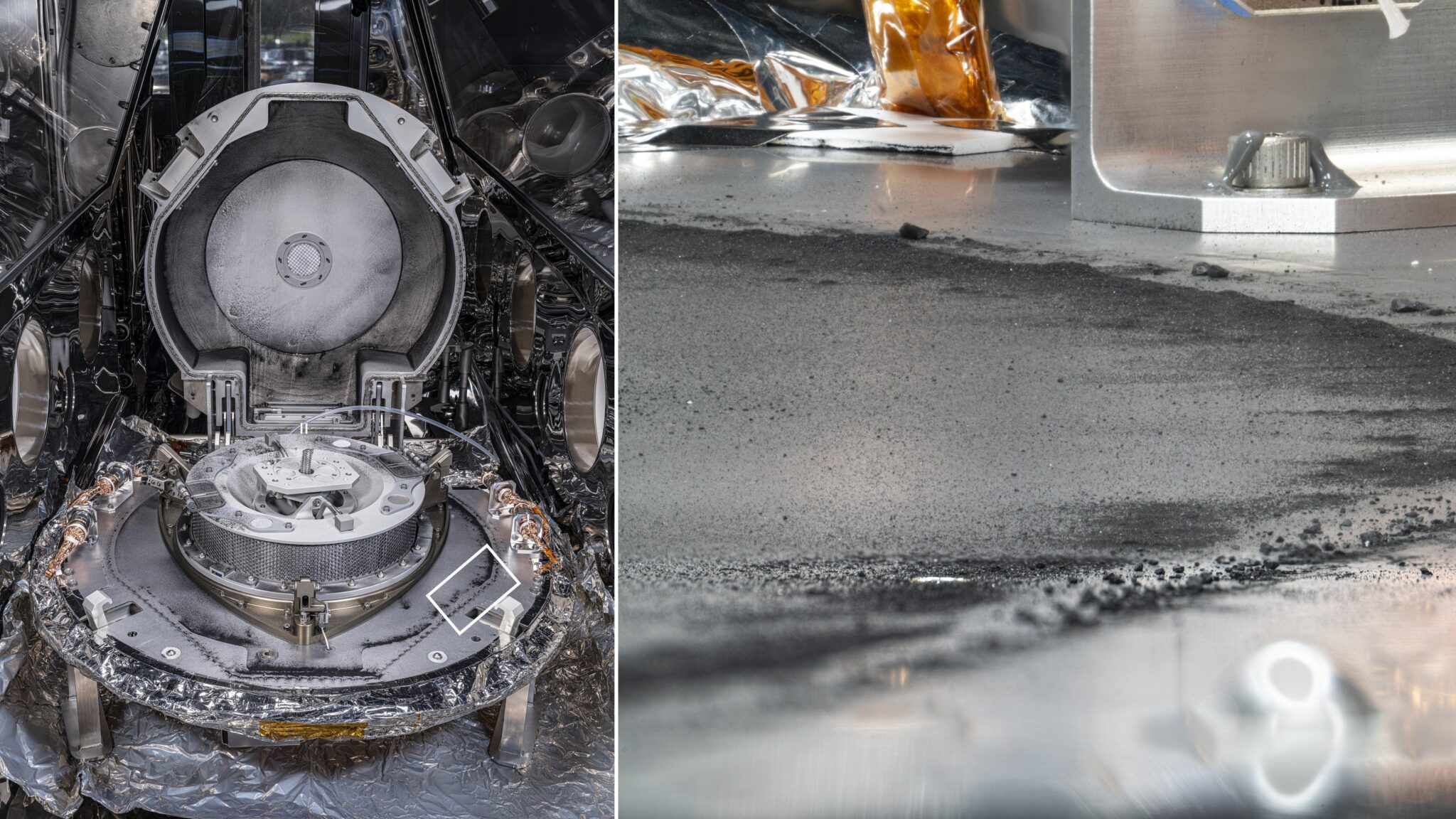On the third of November, the National Museum of Natural History in Washington was incredibly crowded. Many visitors came to the exhibition to see with their own eyes a unique artifact — a fragment of the asteroid Bennu. It was brought to Earth by the OSIRIS-REx spacecraft, which covered a distance of 6.2 billion kilometers. The opening ceremony was attended by NASA Administrator Bill Nelson and representatives of the Smithsonian Institution.

The sample of the asteroid Bennu is presented in a sealed stainless steel capsule with a glass viewing hole filled with pure nitrogen. It is a black stone about 8 mm in size and weighing 143 mg. Two models are located next to the sample: a 1:84 scale replica of the Atlas V rocket that delivered OSIRIS-REx into space and a 1:24 scale model of the probe created by Lockheed Martin.
The asteroid’s substance may contain important information about the early stages of the evolution of our Solar System and the processes of life formation on Earth. In particular, scientists would be able to study water-rich minerals and carbon molecules that arose long before the appearance of life to better understand the origin of planets, terrestrial oceans and living organisms.

Computed tomography of the fragment, designated as OREX-800027-0, showed that it consisted of numerous smaller stones firmly “molded” together. Due to the interaction with water, iron oxides and sulfides, as well as carbonates — the main components along with carbon — were formed in the sample over time.
Before the exhibition, NASA scientists selected five or six candidates to be shown to the public. But this particular stone was considered the best option because it turned out to be “the most photogenic”. In addition to it, the Smithsonian Institution received another sample of Bennu for scientific research.

Two more fragments of the asteroid will be on display at the Alfie Norville Gem & Mineral Museum in Tucson and at Space Center Houston near NASA’s Johnson Center in Texas, where most of the Bennu samples are stored. The opening dates of these exhibitions have not yet been announced, but, according to one of the museums, this may happen as early as November 15.
Earlier we showed a stereoscopic photo of samples of the OSIRIS-REx mission.
According to Space
Follow us on Twitter to get the most interesting space news in time
https://twitter.com/ust_magazine

